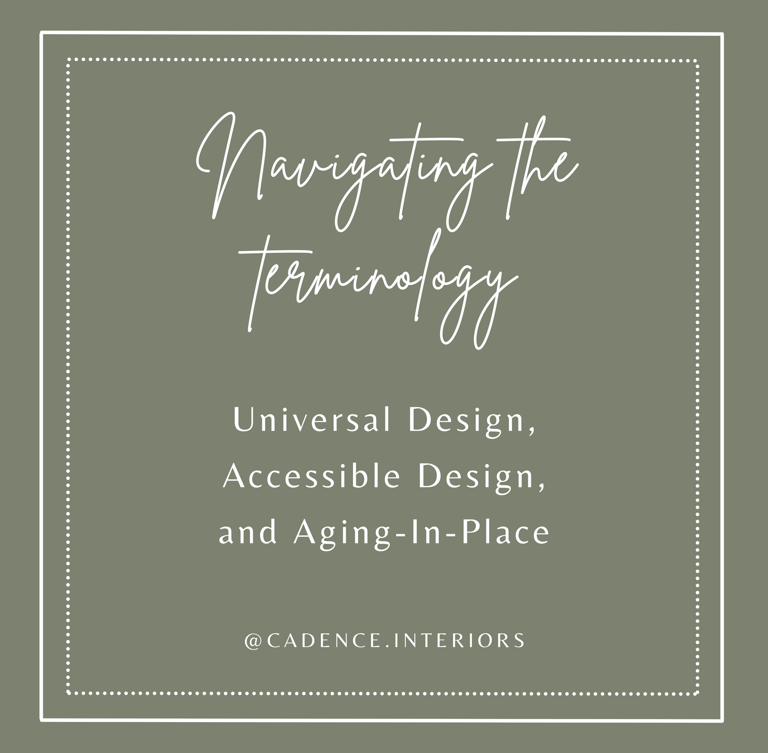Navigating the terminology: Universal Design, Accessible Design and Aging-in-Place
Cadence Interiors
2/24/2024
When discussing home design, various terms are used to describe approaches aimed at creating inclusive and empowering spaces. Three terms that often arise are universal design, accessible design and aging-in-place. While they share a common goal of fostering inclusivity, these terms differ in their focus, scope, and application. Let's explore each term.
Universal Design: Design for All
Universal design takes a broad approach, seeking to create environments that are usable by people of all ages, abilities, and backgrounds. It aims to accommodate diverse needs and preferences without the need for specialized adaptations. It emphasizes inclusivity, flexibility, usability and safety. For example, no-step entrances make it easier for everyone, including individuals with mobility aids, parents with strollers, or people carrying heavy items, to move around comfortably.
Accessible Design: Customized solutions
Accessible design incorporates many of the principles of Universal Design; however, in residential design, it addresses the specific needs of the individual homeowners. It focuses on ensuring that people with mobility, sensory, or cognitive differences can navigate and use spaces independently and safely. Accessible design involves incorporating specific features and modifications tailored to the needs of homeowners. For example, shower grab bars can be positioned to match a person's height and preferred way of transferring in and out of the shower.
Aging-in-Place: Supporting Independence
Aging-in-place in home design refers to creating living environments that support the ability of individuals to live comfortably and safely in their own homes. This involves integrating features and modifications that cater to changing needs as people age. The goal is to enable homeowners to maintain independence and quality of life. An aging-in-place approach to design can benefit people of all ages by promoting accessibility, comfort, and safety in the home environment. It can incorporate principles of both universal design and accessible design.
Designing for Inclusivity
While accessible design, universal design, and aging-in-place each have distinct focuses and considerations, they all share a common goal of creating environments that are inclusive and empowering. By understanding the differences between these concepts and incorporating relevant principles into design practices, designers and homeowners can create spaces where every individual can thrive, regardless of their abilities or stage of life.
At Cadence Interiors, we are passionate about designing homes with usability and longevity in mind. We believe that people of all ages can benefit from thoughtful design that will grow with you and adapt to your needs so that you can live comfortably and safely in your own home. We specialize in applying Universal Design and Accessible Design principles to your home to increase your quality of life. Visit our Design Services page to explore how we can work together to reach your goals for your home.


Ready to start your project?
Complete our contact form and we will get back to you promptly to answer your questions and schedule your inquiry call.


Connect
info@cadenceinteriorsmn.com
Minneapolis | St. Paul, Minnesota
Copyright Cadence Interiors LLC, 2025
